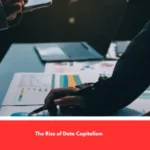Now, in Western labor markets, the consequences of the labor shortage are still being felt on a daily basis, despite the fact that the global economy has slowed significantly since 2021. Employment has returned to its pre-COVID-19 level, and unemployment is at its lowest point since the early 1970s. Although monthly wages have increased, in recent years some markets have been unable to keep pace with inflation, and real wages have fallen in most countries. This is the explanation of Economic Winners and Losers in the AI Revolution.
And here we are, witnessing the rise of a technological revolution that will eventually directly or indirectly influence all jobs. Recently, an article published on the Zerohedge website on August 2nd, entitled ‘Who will artificial intelligence help and who will it hurt in the industrial sector?’ discussed a study on employability trends for the next 10 years conducted in 2023 by countries belonging to the Organization for Economic Cooperation and Development (OECD). These countries agree on one theme: artificial intelligence (AI) is one of the greatest drivers of change in our time.
Widening Inequality Between Countries

According to the OECD report, since AI is a “generally applicable technology,” it will quickly reach almost all sectors, industries, and occupations. In Chapter 4 of the OECD report, entitled Artificial Intelligence, Job Quality, and Inclusion, Andrew Green, Angelica Salvi del Pero, and Annelore Verhagen explain that in OECD member countries, just over half (27%) of jobs may face serious risks due to the anticipated AI revolution. They emphasize the real need for public and social policies, as well as private and long-term systems.
The outlook compiles the results of the first cross-country survey in which the The study investigated the effect of AI on the labor market, involving employees and companies in the financial and manufacturing sectors in seven OECD countries. These include those occupations that, despite being most exposed to the latest AI advances, still receive a low risk; while those requiring low and medium skills are the most at risk of disappearing, including in construction, agriculture, fishing, and forestry, and to a lesser extent in the manufacturing and transportation sectors, according to the OECD’s perspective, which emphasizes that there is currently no evidence of negative effects.
Massive Transitional Costs

According to the report, “AI, like any other type of automation technology, evolves outside the decisions of its creator and can render many tasks useless, leaving them jobless and forcing them to look for a new path or to strengthen their skills.” However, according to the testimonies of the employees surveyed, so far the greatest effect of AI has been felt mainly in the changes they perform in their jobs. Daily work, not without a change in the work environment. These changes can have a direct effect on the quality of work, thus contributing to people’s well-being.
For example, AI may be associated with trust in dangerous tasks, which should increase job satisfaction and safety in certain dangerous areas. On the other hand, workers may find themselves caught in an increasingly narrow space of simpler tasks and could work harder, eventually imposing downward pressure on their wages. It is workers with AI-specific skills, or those who develop, train, and maintain AI systems, who can earn high salaries and enjoy significant bonuses, even as similarly observable workers with other recognized skills (for example, software, cognitive, etc.).
How to Invest During the Coming AI Revolution

Management occupations show the highest AI wage premiums, suggesting that for the largest segment of workers exposed to AI — those who use or interact with AI but do not necessarily have or require AI skills — the AI landscape has had a minimal impact on wage composition so far. These nominal impacts on wages align with empirical evidence showing that AI has had little effect on productivity to date. It is now more reasonable to expect that large or capital-intensive firms (which are typically more productive) will adopt AI, and productivity gains become substantial once we account for observable differences between firms.
However, once again, the evidence from studies. The rapid progress and adoption of AI will require the development of new skills, but existing ones will no longer be relevant. Employers will require older workers without a solid resume to undergo further training, but they will not spare those with higher qualifications either. Therefore, governments should mobilize employers to offer more training, incorporate AI skills into their education, and sustain the diversity of the AI workforce.
Conclusion

The government must immediately address critical issues related to AI: the risks it can pose in the workplace, concerns about privacy, security, equity, and workers’ rights, and the need to ensure accountability and transparency in AI-supported employment decisions. In short, he was referring to what Open Mind BBVA is saying, in that the impact of AI on the future of work is a complex and multifaceted issue that requires early and careful reflection and planning.
While AI has the potential to transform the way we work and increase productivity, it comes with important implications, including job displacement and ethical preconception. To prepare for the future of work, people and organizations must prioritize upskilling and reskilling to ensure they have the skills and knowledge needed to operate in a world dominated by AI. Likewise, policymakers must consider the potential impacts of AI on employment and design policies that manage the benefits of AI equitably.





